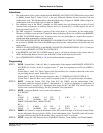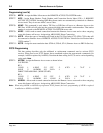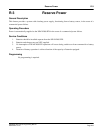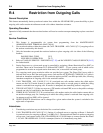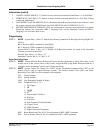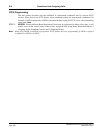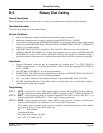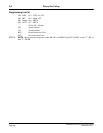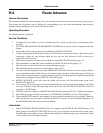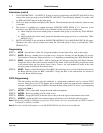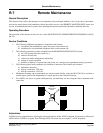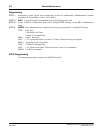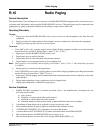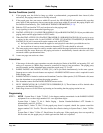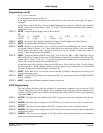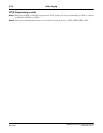
NEAX2400 IPX Feature Programming Manual
NDA-24297, Issue 1
Page 621
Route Advance R-6
R-6 Route Advance
General Description
This feature automatically routes outgoing calls over alternate facilities when the first-choice trunk group is busy.
User selects the first-choice route by dialing the corresponding access code, and the equipment then advances
through alternate trunk groups only if the first choice is busy.
Operating Procedure
No manual operation is required.
Service Conditions
1. No indication is provided to a user as to whether the call is routed over first-choice or subsequent choice
facilities.
2. STATION MESSAGE DETAIL RECORDING SYSTEM [S-10] may be used in conjunction with this
feature.
3. Only trunks of the same type may be programmed for ROUTE ADVANCE.
4. Careful consideration should be given to the use of FX trunks as an alternate facility. These lines require
outpulsing of digits for long distance which the user may not dial, because he will not know he is
connected to such a facility.
5. The maximum number of routes to be included in a single ROUTE ADVANCE group is 15.
6. The total number of routes that can be contained in all ROUTE ADVANCE groups is 31.
7. The same route can be included in two or more alternative groups.
8. The maximum number of trunks to be included in a route is 255.
9. No code conversion capability is provided with ROUTE ADVANCE; therefore, the exact digits (after the
access code) the user dials will be sent over the selected trunk, regardless of the trunk group used. The user
will not know what trunk group is selected; therefore, only those trunk groups that accept the same dialing
format may be assigned to a given ROUTE ADVANCE group.
10. ROUTE ADVANCE occurs only when the dialed code accesses the first-choice trunk group in the
ROUTE ADVANCE list.
11. In most cases, FX trunk groups to a Foreign Numbering Plan Area do not require the dialing of the FNPA
area code. Therefore, these FX trunks may not be used in the same ROUTE ADVANCE list with local
exchange or WATS trunks.
12. TIE Lines cannot be assigned to a ROUTE ADVANCE list that includes CO, FX, or WATS trunk groups.
13. The dialing party may be either a station line, ATTENDANT CONSOLE [A-3], or a TIE trunk line.
14. When using the FCCS network, the outgoing call using a trunk in the remote node is available. Therefore,
Route Restriction class data must be identical in the FCCS network. For more detailed information, see
the NEAX2400 IPX Fusion Network System Manual.
Interactions
1. When OUTGOING TRUNK QUEUING [O-2] is assigned with the ROUTE ADVANCE feature, if all
trunk groups in one ROUTE ADVANCE list are busy, the call queues on the first-choice trunk group.
Each time the system checks for an available trunk, only the first-choice trunk group is scanned; if a trunk
is not available, the call remains in queue.



